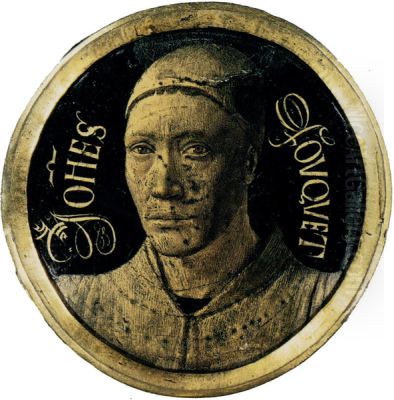
Jean Fouquet stands as a pivotal figure in the annals of French art, a master painter and manuscript illuminator whose work forms a crucial bridge between the late Gothic period and the burgeoning Renaissance in 15th-century France. Active primarily between the 1440s and his death around 1481, Fouquet was an artist of remarkable skill and innovation, successfully integrating the revolutionary artistic developments of the Italian Renaissance with the established traditions of Northern European painting. His contributions, particularly in portraiture and manuscript illumination, earned him immense prestige during his lifetime, including the coveted position of court painter to the French kings.
Born in Tours around 1420, Fouquet's early life and training remain somewhat shrouded in mystery. It is widely speculated that he may have received initial training in Paris, possibly within the workshops responsible for illuminating manuscripts, a craft deeply rooted in French artistic tradition, exemplified by predecessors like the Limbourg brothers. Some accounts suggest he was the illegitimate son of a priest, adding a layer of complexity to his origins, though concrete evidence is scarce. Regardless of his specific beginnings, it is clear that he emerged with a formidable technical foundation.
The Transformative Italian Journey
A defining period in Fouquet's artistic development was his journey to Italy, undertaken sometime between 1443 and 1447. This voyage exposed him directly to the seismic shifts occurring in Italian art. In cities like Rome and Florence, he encountered the works of pioneering Renaissance masters. He absorbed the principles of linear perspective, the sophisticated modeling of form through light and shadow (chiaroscuro), and the pursuit of naturalism that characterized the Italian Quattrocento.
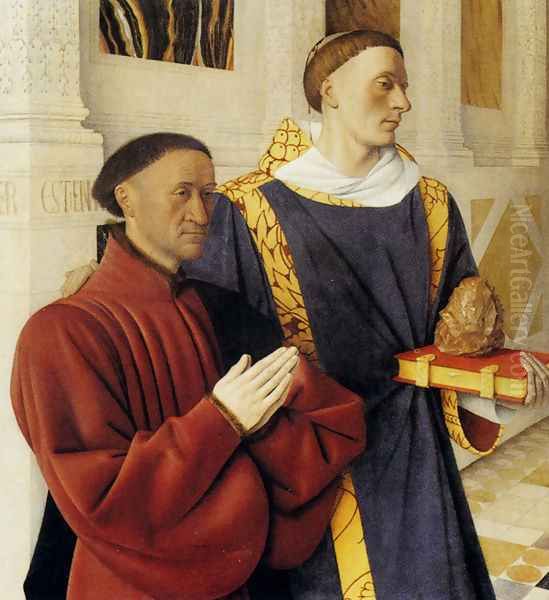
Artists such as Fra Angelico, with his serene compositions and delicate use of color, undoubtedly left an impression. The monumental realism and dramatic intensity found in the frescoes of Masaccio and perhaps his collaborator Masolino, and the mathematically precise compositions and volumetric figures of Piero della Francesca, offered Fouquet profound lessons in spatial construction and human anatomy. He also likely encountered the work of architects and theorists like Filarete in Rome. This Italian sojourn was not merely observational; Fouquet actively assimilated these new ideas into his artistic vocabulary. He even gained recognition in Rome, notably painting a portrait of Pope Eugene IV (now lost) that was reportedly much admired.
Return to France and Royal Patronage
Upon returning to France, Fouquet established his primary workshop in his native Tours, a significant center of political and cultural life in the Loire Valley. His reputation, likely bolstered by his Italian experiences and the papal portrait, grew rapidly. He attracted the patronage of the highest echelons of French society, including figures associated with the royal court. His skills were sought after by King Charles VII, for whom he painted a striking official portrait.
This portrait, now housed in the Louvre Museum, is a landmark in French art. It depicts the king with an unflinching realism, capturing his distinct features and weary expression, set against a simple background. It eschews idealized flattery for a more direct, psychologically insightful representation, showcasing Fouquet's mastery of observation and his ability to convey personality. Later, Fouquet's prominence was further solidified when he was appointed official court painter (peintre du roi) to Charles VII's successor, King Louis XI, around 1475, a position he held until his death. This royal appointment signified the highest level of artistic recognition in the kingdom.
A Synthesis of Styles: Italian Renaissance Meets Northern Tradition
Jean Fouquet's artistic genius lies in his unique synthesis of the Italian Renaissance innovations he had absorbed with the rich artistic heritage of Northern Europe, particularly the Franco-Flemish tradition. From Italy, he brought a command of perspective, a sense of volume and anatomical accuracy, and an interest in classical architectural motifs. From the North, particularly influenced by masters like Jan van Eyck and perhaps Rogier van der Weyden, he retained a meticulous attention to detail, a love for rich textures and surfaces, and a brilliance in the use of color, often achieved through oil glazes.
His paintings demonstrate a remarkable balance between these elements. Figures possess a tangible weight and occupy convincingly rendered spaces, yet they are often adorned with exquisitely detailed fabrics and jewels rendered with Flemish precision. Landscapes, whether real or imagined, are depicted with atmospheric depth and careful observation of natural elements. This fusion resulted in a style that was both monumental and intimate, innovative yet grounded in tradition, setting a new standard for French painting.
Masterpieces of Panel Painting
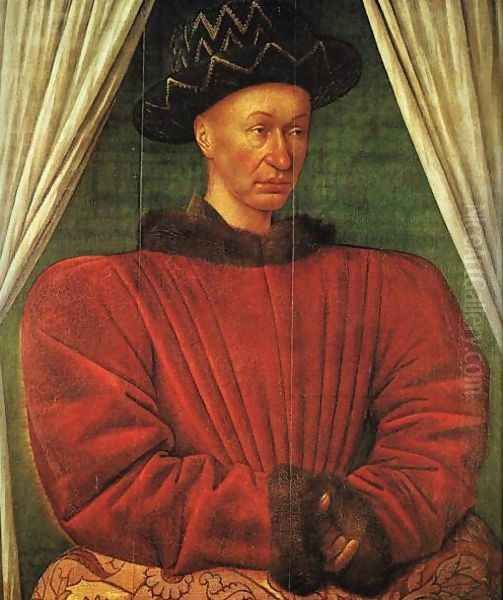
Among Fouquet's most celebrated panel paintings is the Melun Diptych, created around 1452 for Étienne Chevalier, the treasurer of France. Originally displayed in the Collegiate Church of Notre-Dame in Melun, the two panels are now separated. The left wing, depicting Chevalier kneeling in prayer presented by his patron saint, St. Stephen (holding a stone, the instrument of his martyrdom), is now in the Gemäldegalerie, Berlin. This panel showcases Fouquet's skill in portraiture and his integration of Italianate architectural elements in the background.
The right wing, housed in the Royal Museum of Fine Arts Antwerp, presents a startlingly unconventional Virgin and Child. Mary, depicted with idealized, high-fashion features (possibly modeled after Agnès Sorel, Charles VII's mistress), is shown with an exposed breast, enthroned amidst a celestial court of vibrant red and blue cherubim and seraphim. The stark color contrasts, the sculptural quality of the figures, and the otherworldly atmosphere make it one of the most iconic and debated images in French art. The diptych as a whole exemplifies Fouquet's ability to blend realistic portraiture, devotional intensity, and bold stylistic innovation.
Pioneer of Manuscript Illumination and the Portrait Miniature
Fouquet was not only a master of panel painting but also one of the greatest manuscript illuminators of his time. He brought the same stylistic innovations – perspective, realistic figures, detailed settings – to the smaller scale of the illuminated page, revolutionizing the art form. His most famous work in this field is the Book of Hours of Étienne Chevalier. Although the original book was dismantled, around 47 of its exquisite miniature pages survive, dispersed across various collections worldwide (including the Musée Condé in Chantilly).
Each miniature in the Chevalier Hours is a masterpiece of composition and narrative clarity. Fouquet treated each page like a small panel painting, employing sophisticated spatial arrangements, realistic landscapes or architectural settings, and figures imbued with psychological depth and natural movement. He depicted biblical scenes and saints' lives with unprecedented realism and dramatic flair, often incorporating contemporary French settings and details. Works like the Annunciation or the Crucifixion from this manuscript demonstrate his full command of painterly effects on a miniature scale.
Fouquet is also credited as a key figure in the development, if not the outright invention, of the independent portrait miniature. While small portraits existed within manuscripts, Fouquet created small, standalone roundel portraits, such as his own self-portrait enamel, which demonstrate a move towards portraiture as an independent genre even on a small scale.
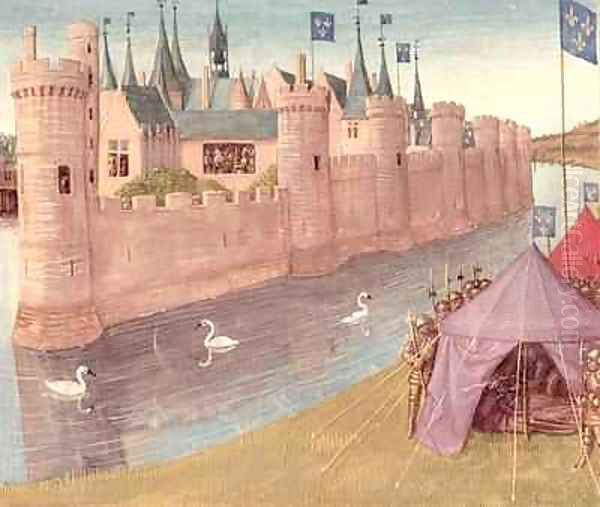
He also illuminated secular manuscripts, most notably a copy of the Grandes Chroniques de France (Great Chronicles of France), now in the Bibliothèque Nationale de France. His illustrations for this historical text bring French history to life with vivid depictions of battles, coronations, and courtly events, often set within recognizable French landscapes or architecture, contributing to a sense of national identity. Another significant commission was the illustration of a French translation of Josephus's Jewish Antiquities.
Workshop, Influence, and Artistic Network
Operating from his workshop in Tours, Fouquet undoubtedly employed assistants and trained apprentices to help manage his numerous commissions, which ranged from large altarpieces and portraits to intricate manuscript illuminations and even designs for stained glass or ephemeral decorations. While the specific workings of his studio are not fully documented, his influence was significant.
Among his known pupils or followers were his sons, Louis and François Fouquet, who likely continued the workshop after his death. Perhaps the most notable artist strongly influenced by Fouquet was Jean Bourdichon, who also served the French court and whose style, particularly in manuscript illumination, clearly shows the impact of Fouquet's innovations in composition and realism, though perhaps lacking Fouquet's ultimate refinement. Another painter associated with his circle is Guillaume Piqueau. Fouquet also collaborated or interacted with other figures in the vibrant cultural milieu of Tours, possibly including scribes and scholars like Guillaume de Bélieu, whose disciples may have worked alongside Fouquet on certain manuscript projects.
Fouquet's influence extended beyond his direct circle. His synthesis of Italian and Northern styles provided a model for subsequent generations of French artists. Painters like Jean Clouet and his son François Clouet, active in the following century, continued the French tradition of sharp, realistic portraiture that Fouquet had so masterfully advanced. His impact on manuscript illumination was profound, setting a high bar for quality and innovation.
Rediscovery and Historical Legacy
Despite his fame during his lifetime and his position as court painter, Jean Fouquet's name and work fell into relative obscurity after the 16th century. Artistic tastes shifted, and later generations perhaps overlooked the unique brilliance of his Franco-Italian synthesis. It was not until the 19th century, during a period of renewed scholarly interest in medieval and early Renaissance art, that his significance was re-evaluated.
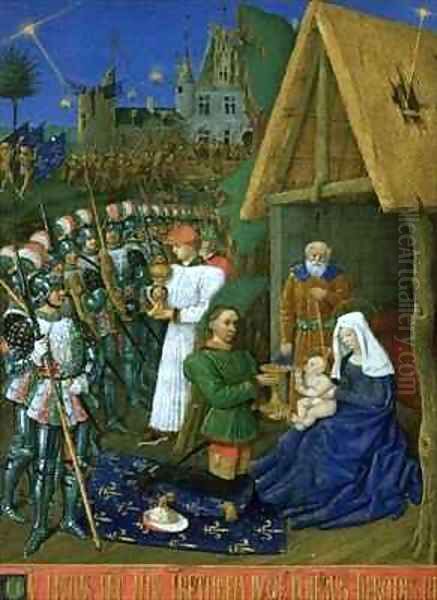
Scholars, notably the German art historian Gustav Friedrich Waagen, began to identify and attribute works to Fouquet, piecing together his oeuvre and recognizing his crucial role in the development of French art. Exhibitions and publications in the late 19th and early 20th centuries further cemented his reputation. Today, Jean Fouquet is universally acknowledged by art historians as the preeminent French painter of the 15th century.
His historical importance lies in his role as a conduit and synthesizer. He was arguably the first French artist to fully grasp and adapt the principles of the Italian Renaissance, integrating them seamlessly with the strengths of his native tradition. He elevated the art of manuscript illumination to new heights of painterly sophistication and brought a new level of psychological realism and formal dignity to French portraiture. His work embodies the transition from the Gothic world to the Renaissance humanism that was beginning to flourish north of the Alps.
Conclusion: An Enduring Vision
Jean Fouquet's career represents a remarkable confluence of artistic currents. Rooted in the rich traditions of French manuscript illumination and panel painting, he boldly embraced the revolutionary ideas flowing from Renaissance Italy. The result was an art of exceptional clarity, technical brilliance, and expressive power. From the regal solemnity of his royal portraits to the intimate devotion or dramatic intensity of his miniatures, Fouquet's work consistently reveals a keen eye for observation, a mastery of composition, and a profound understanding of human character and narrative. As the leading French master of his generation and a crucial link between medieval and Renaissance sensibilities, Jean Fouquet's legacy endures, his paintings and illuminations continuing to captivate viewers with their unique blend of Northern detail and Italianate form.